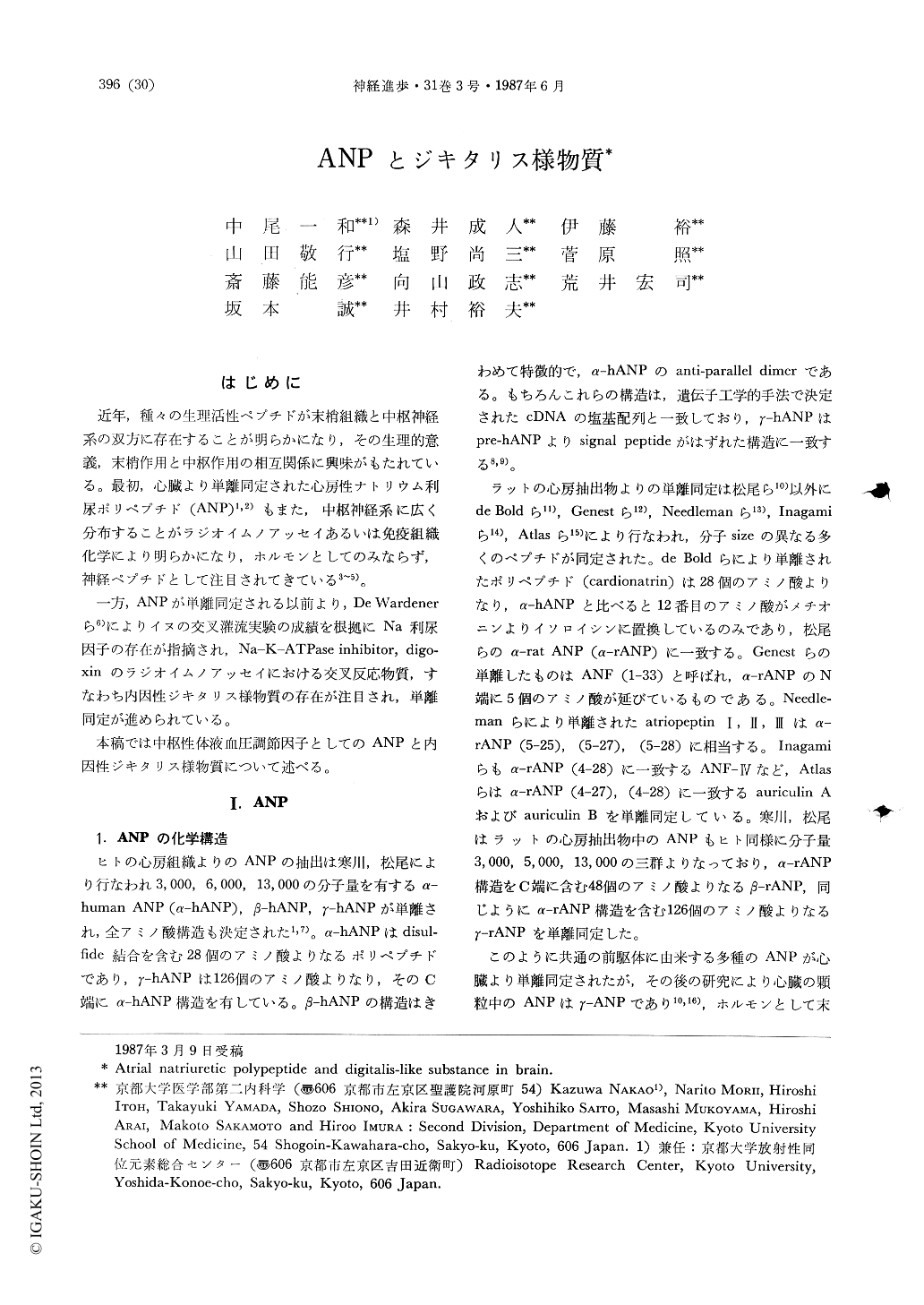Japanese
English
- 有料閲覧
- Abstract 文献概要
- 1ページ目 Look Inside
はじめに
近年,種々の生理活性ペプチドが末梢組織と中枢神経系の双方に存在することが明らかになり,その生理的意義,末梢作用と中枢作用の相互関係に興味がもたれている。最初,心臓より単離同定された心房性ナトリウム利尿ポリペプチド(ANP)1,2)もまた,中枢神経系に広く分布することがラジオィムノアッセイあるいは免疫組織化学により明らかになり,ホルモンとしてのみならず,神経ペプチドとして注目されてきている3〜5)。
一方,ANPが単離同定される以前より,De Wardenerら6)によりイヌの交叉灌流実験の成績を根拠にNa利尿因子の存在が指摘され,Na-K-ATPase inhibitor,digoxinのラジオイムノアッセイにおける交叉反応物質,すなわち内因性ジキタリス様物質の存在が注目され,単離同定が進められている。
Biologically active peptides isolated in the peripheral organs often distribute in the central nervous system and their central actions are often, although not always, complementary to their peripheral actions. Atrial natriuretic polypeptide (ANP) is one of these biologically active peptides.
ANP first isolated from the heart as a hormone is also present in the brain. The predominant molecular forms of ANP in the rat brain are a-rat ANP (4-28) and α-rat ANP (5-28). Thus, the molecular form of ANP as a neuropeptide is different from α-ANP as a hormone.

Copyright © 1987, Igaku-Shoin Ltd. All rights reserved.


